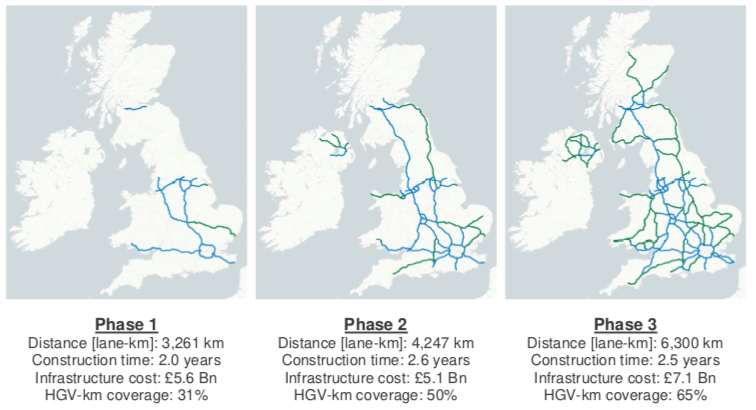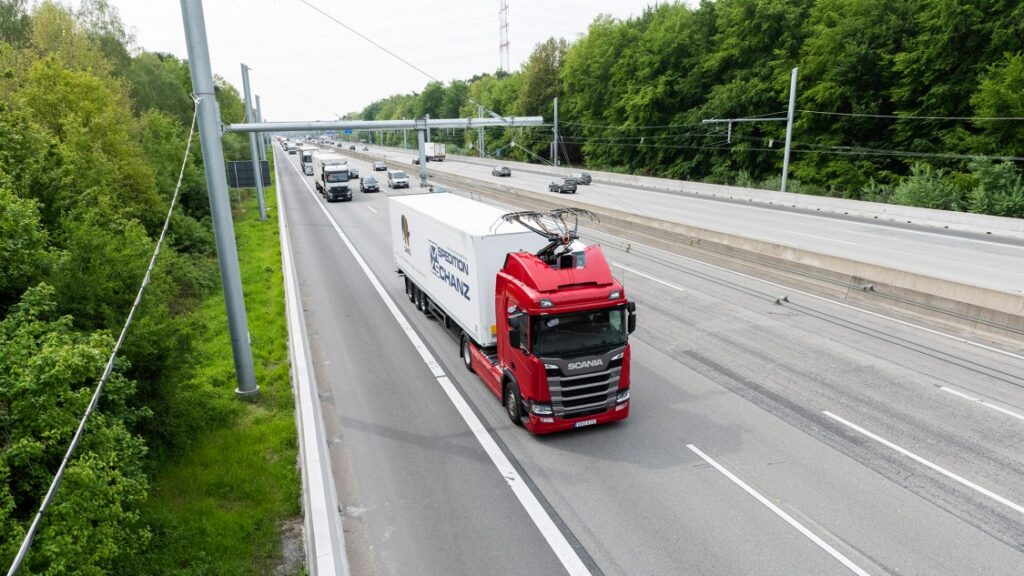Siemens has been trialling an eHighway system that uses overhead electrified wires to power long-haul heavy goods vehicles on major roads. Installing this infrastructure could cut out two-thirds of the UK’s road freight emissions.
The UK could eliminate the majority of the carbon dioxide emissions from road freight by installing overhead charging cables for electric lorries on eHighways, a report found.
A three-phase roll out across the UK has been proposed:

The first stage of building this infrastructure would take two years, costing £5.6 billion. By electrifying these popular routes alone, this would cover almost a third of miles travelled by heavy goods vehicles in the UK. The other later two stages would bring the cost to a total of £19.3 billion.
The engineering company Siemens and chassis-manufacturer Scania have already carried out extensive testing of the eHighway electric road systems in Germany, Sweden and the US using 100% renewable energy.
Road freight sector is a significant contributor to the climate crisis, accounting for 5% of the UK’s carbon dioxide emissions in 2018, according to national government statistics on greenhouse gas emissions. The road transport sector also had the most substantial increase in global greenhouse gas emissions over the last decade. The
Committee on Climate Change recommended on-road charging for lorries in its latest Parliamentary report.
While battery-powered electric lorries and vans are entering the market for short-range deliveries in urban areas, this is impractical for long-haul deliveries, which make up two-thirds of road freight usage.
Long-haul freight is challenging to decarbonise due to range and weight requirements. The lithium-ion batteries used for electric cars do not have a high enough energy density to be viable for long-distance haulage. At present, the tonnes of battery required would decrease efficiency and raise cost exponentially.
‘However, an HGV fitted for electric roads could travel the UK with a battery the size of the Tesla cars,’ said Prof David Cebon, who co-authored the study.
‘It combines the efficiency of electrified rail with the flexibility of trucks and leads to a significant reduction in energy consumption without restricting mobility,’ a spokesperson at Siemens commented. ‘The system is compatible with the existing infrastructure, can be combined with alternative fuels, drive systems and new transport technologies.’
The electric road system has an advantage over other alternative fuels. It would be possible to tax the electricity used by lorries, enabling government to replace revenues lost from taxing diesel fuel.
Lower energy costs are predicted to pay back vehicle operators within 18 months.




